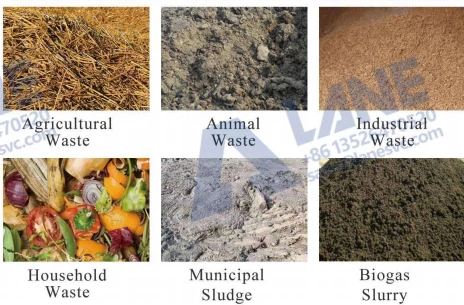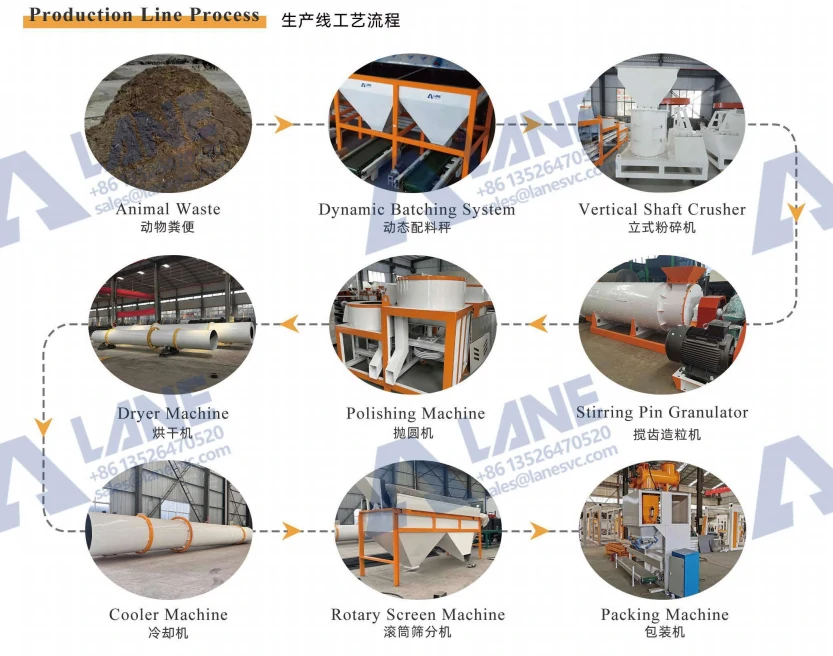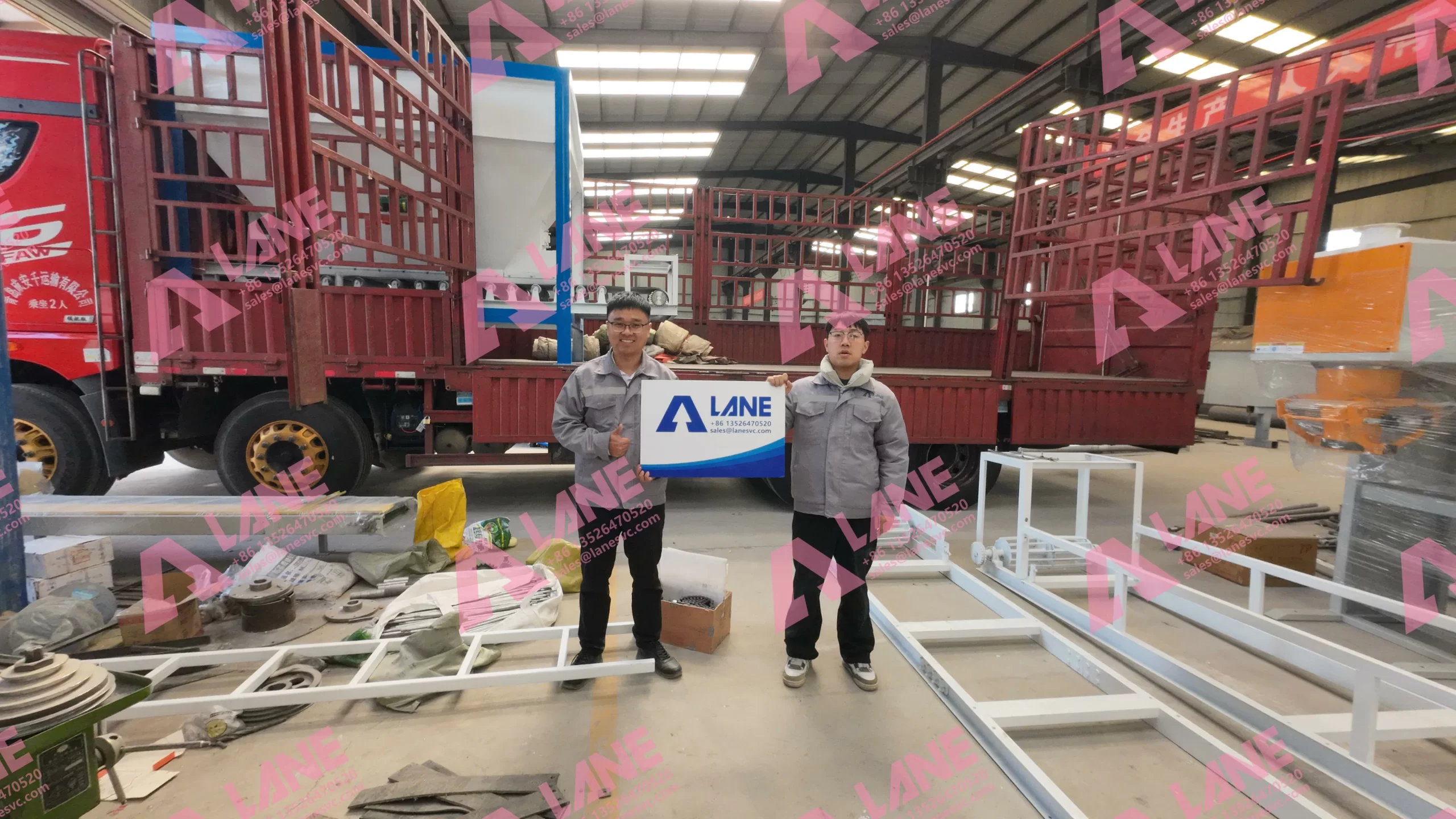In this era when sustainable development is no longer optional, compost-based granular organic fertilizer has emerged as a key innovation in eco-friendly agriculture. This fertilizer combines the powerful functions of organic compost with the efficiency of granulation, providing crops with sustained nutrition while helping farms manage waste in a responsible manner.
Whether you are a small organic farm or a large agricultural enterprise, understanding the advantages, production processes and equipment selection of compost-based granular organic fertilizers can help you maximize yields, reduce input costs, and maintain soil health for future generations.

What Is Compost-Based Granular Organic Fertilizer?
Compost-based granular organic fertilizer is produced by processing organic materials like livestock manure, crop residues, and green waste through controlled composting, followed by drying and granulation into uniform particles. Unlike raw compost, which can be bulky and inconsistent, granulated compost-based fertilizer offers:
Improved storage and transport efficiency
Easy mechanical application
Controlled nutrient release
Longer shelf life
These granules are nutrient-rich, environmentally safe, and ideal for improving soil fertility without relying on chemical inputs.
Why Compost-Based Granular Organic Fertilizer? A Quick Comparison
| Feature | Compost-Based Granular Organic Fertilizer | Chemical Fertilizer | Raw Compost |
| Nutrient Release | Slow & steady | Rapid | Inconsistent |
| Environmental Impact | Low | High (runoff, pollution) | Low |
| Ease of Application | High | High | Low |
| Storage & Handling | Convenient | Convenient | Difficult |
| Soil Health Impact | Improves structure & biology | Can degrade over time | Improves slowly |
Key Raw Materials in Compost-Based Granular Organic Fertilizer
The success of compost-based granular organic fertilizer lies in the use of high-quality raw materials. Each type of organic waste can contribute unique nutritional components and structural advantages to the final product.
1.Livestock manure
The manure from chickens, cows, pigs and sheep is the primary source of nitrogen and phosphorus. Chicken manure in particular is renowned for its rich nutrients and rapid decomposition.
2.Crop residues
Materials such as wheat straw, corn stalks, and rice husks can replenish essential organic matter and help maintain the aeration within the compost pile. They are rich in carbon and can balance the nitrogen content of high-nitrogen fertilizers.
3.Green Waste
Leaves, pruned branches and grass clippings are all excellent materials for composting. Urban landscaping projects often generate large amounts of such waste, making it an economically efficient raw material.
4.Biogas Digestate and Food Waste
In areas with active biogas production, the digestate is typically used as a nutrient enhancer. Similarly, food processing waste (such as vegetable peels, expired grains) can increase the moisture and diversity of the compost substrate.

An appropriate carbon-to-nitrogen ratio (C:N) – typically ranging from 25:1 to 30:1 – is crucial for microbial activity. During the initial stage of composting, the moisture content should be maintained at around 50-60%. LANE’s automated material batching system helps to precisely control these parameters, ensuring the optimal microbial decomposition state before granulation.
How Compost Becomes Granules: The Production Workflow
Converting compost into granular organic fertilizer involves a series of technical steps that transform loose, unstable material into uniform, easy-to-store, and nutrient-rich granules. Here’s a detailed look at each stage of the process:
1.Pre-Processing: Crushing and Mixing Raw Materials
Before fermentation begins, raw materials like livestock manure, crop residues, and garden waste must be properly prepared. This involves crushing them into smaller particles to ensure even texture and moisture content.
LANE’s semi-wet material crushers or vertical shaft crushers and horizontal mixers are specifically designed to handle high-moisture organic matter and create a homogeneous blend—crucial for effective fermentation and granulation later on.
2.Fermentation: Stabilizing Organic Matter
Fermentation is the biological heart of the process. Through aerobic composting, microbes decompose organic waste into mature compost rich in humus and nutrients. This stage also eliminates harmful pathogens and foul odors.
LANE offers crawler type compost turners, groove type compost turners, and vertical fermentation tanks to speed up this phase while maintaining precise control over oxygen levels, temperature, and humidity.
3.Screening and Moisture Adjustment
Once composting is complete, the material is screened to remove large debris, uncomposted chunks, or foreign matter. Proper moisture levels are also critical—too much water will hinder granulation, while too little may result in brittle pellets.
LANE’s rotary drum screeners and solid-liquid separators ensure that the compost is clean and at the ideal moisture level for granulation.
4.Granulation: Shaping Compost into Uniform Pellets
This is the core step where the compost becomes a granular product. Granulators such as disc granulators or stirring pin granulators are used to compress and shape the material into small, round pellets—typically 3–6 mm in diameter.
During this stage, supplemental materials like humic acid, nitrogen sources, or trace minerals can be added to enhance nutrient content and cater to specific soil or crop needs.
5.Drying and Cooling: Improving Stability and Shelf Life
Fresh granules still contain residual moisture and heat. They must be dried and cooled to ensure long-term stability, prevent clumping, and prepare for packaging.
LANE’s rotary drum drying and cooling machines handle this with energy-efficient systems that preserve granule structure while optimizing throughput.
6.Coating and Final Screening
To improve flowability and prevent moisture absorption during storage and transport, the granules are coated with anti-caking agents or polymer films. After coating, a final screening ensures all granules are within size specifications, with oversized or undersized particles removed.
LANE’s coating machines provide uniform coverage while minimizing product loss.
7.Packaging and Storage
In the final step, the finished granules are weighed, bagged, and sealed using automated packing systems. They can be packed in 25kg bags, bulk bags, or custom retail packaging, depending on market demand.
LANE’s intelligent packing lines ensure accuracy, speed, and seamless integration with upstream production lines.

Case Study:Compost-Based Granular Organic Fertilizer Success with LANE in Southeast Asia
In 2024, an agricultural cooperative in the Mekong Delta region of Vietnam implemented a 10-ton/hour compost-based granular organic fertilizer production line using LANE technology. The raw materials used included chicken manure, banana stem fibers, and cassava residue.
The achievements obtained after six months:
The use of fertilizers was reduced by 50%, resulting in cost savings and improved soil health.
The yields of paddy fields and leafy vegetables have increased by 20% to 35%.
With the production system certified by LANE for CE and ISO standards, the cooperative successfully entered the export markets of Cambodia and Laos.
Using the LANE stirring pin granulator for fixed granulation allows for flexible adjustment of the nutrient formula according to the soil conditions in different regions.
Thanks to LANE’s after-sales training and remote support services, this cooperative currently operates a fully automated production line with extremely short downtime. This project demonstrates how compost granule fertilizers can be combined with modern technology, not only being sustainable but also generating substantial profits.
The Cross-Departmental Application of Compost-Based Granular Organic Fertilizer
Compost-based granular organic fertilizer is compatible with a wide range of crops and farming systems. Its slow-release nature and uniform structure make it appealing across diverse sectors:
Cereal Crops: Corn, wheat, barley — especially in large-scale commercial farms.
Vegetables & Horticulture: Tomatoes, peppers, lettuce, cucumbers — the granular format is easy to apply and reduces leaching.
Fruit Trees: Apples, oranges, mangoes — granules can be applied around drip lines or broadcast during the growing season.
Cash Crops: Tea, coffee, sugarcane — enhance soil structure and microbial activity for long-duration crops.
Greenhouse Farming: Offers controlled-release nutrients in confined systems.
Organic Farms: Meets organic certification criteria when input materials are verified and processing is chemical-free.
With flexible formulations and LANE’s customizable compost-based granular organic fertilizer systems, farmers can create crop-specific nutrient blends that outperform generic fertilizers. The precision in application also helps reduce over-fertilization and runoff, a key issue in sustainable agriculture.
Challenges and How LANE Solves Them
| Challenge | LANE’s Solution |
| High moisture content in raw manure | Advanced dewatering machines and fermentation turners |
| Granulation instability | Custom-designed granulators with moisture control |
| Inconsistent quality | Integrated systems with automated batching and coating |
| Labor-intensiveness | Full automation from compost to packaging |
| Compliance with export standards | CE, ISO, SGS-certified equipment ensures global market access |

While producing compost-based granular organic fertilizer comes with challenges like moisture control, granule uniformity, and process automation, LANE provides tailored solutions that streamline production, reduce waste, and improve product quality. With our advanced equipment and engineering support, transforming compost into high-value granules becomes efficient, scalable, and profitable.
Is It Worth the Investment?
Investing in a compost-based granular organic fertilizer production line is more than just a sustainability gesture—it’s a move toward long-term profitability with measurable ROI (Return on Investment).
Compared with bulk compost, granular organic fertilizer has a higher market value, is easier to package and transport, and has a longer shelf life. These factors directly contribute to the increase in income. By converting organic waste into stable and standardized products, producers can open up high-demand markets, including organic agriculture, export trade, and retail of gardening supplies.
The initial capital expenditure may seem high, but the investment returns are usually faster than expected, especially when taking advantage of government subsidies or carbon credit allowances for promoting sustainable practices. Energy-saving systems and automated machinery reduce the demand for labor while improving product consistency, thereby minimizing operating costs to the greatest extent.
LANE’s advanced equipment is meticulously designed and highly scalable – allowing manufacturers to start with a small production line and expand as demand grows. This flexibility can protect your investment and maximize long-term cash flow. For small farms, cooperatives, or municipal composting projects, switching to granular fertilizer production not only enhances ecological benefits but also converts waste into a reliable source of income.
In short, when you factor in product value, market demand, policy incentives, and reduced operational costs, the ROI of compost-based granular fertilizer production becomes an attractive prospect for any forward-thinking agribusiness.
FAQ: Compost-Based Granular Organic Fertilizer
Q1: What is the shelf life of compost-based granular organic fertilizer?
Properly dried and coated granules can last up to 24 months without losing nutrient value, provided they are stored in a dry, cool place.
Q2: Can different nutrient formulas be produced?
Yes. With LANE’s modular production systems, different additives and nutrient formulas can be blended and granulated for customized product lines—ideal for various soil types or crop needs.
Q3: Is this type of fertilizer allowed in organic farming?
Absolutely. As long as the raw materials and processing methods meet organic certification standards (such as EU Organic or USDA Organic), compost-based granular fertilizers are widely accepted in organic agriculture.
Q4: What kind of feedstocks can be used?
Livestock manure (especially from poultry, cows, and pigs), crop residues, food waste, green waste, and even sludge can be used—depending on local regulations. The key is proper pre-treatment and composting.
Q5: How labor-intensive is the operation?
With LANE’s fully automated systems, labor demand is significantly reduced. From compost turning to granule packaging, much of the process can be managed by a small team, increasing operational efficiency.
Conclusion: LANE Helps You Build a Greener, Profitable Future
Compost-based granular organic fertilizer is no longer a niche—it’s the future of sustainable agriculture. It reduces waste, revitalizes soil, and supports a more circular economy, all while opening profitable market opportunities for forward-thinking producers.
LANE delivers more than just machines—we offer end-to-end solutions that include site planning, training, installation, and after-sales service. Whether you’re scaling up existing compost operations or entering the fertilizer market for the first time, our team helps you minimize risk and maximize performance.
In a world increasingly focused on ecological responsibility and food security, compost-based granular organic fertilizer isn’t just a good idea—it’s a smart investment in the health of the planet and your bottom line.
For more details, please feel free to contact us.
Henan Lane Heavy Industry Machinery Technology Co., Ltd.
Email: sales@lanesvc.com
Contact number: +86 13526470520
Whatsapp: +86 13526470520